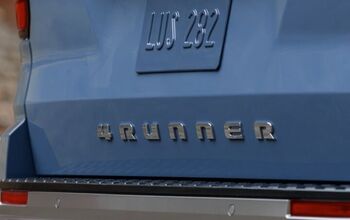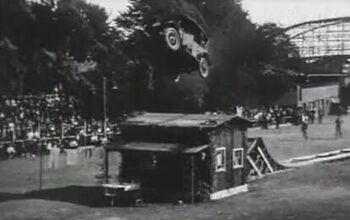Germany's ADAC Tests Crash Test. Crash Test Fails

Since Sunday, a story made the news in Germany that a Ford Fiesta and a Peugeot 308 had been crashed by Germany’s auto club ADAC, with horrific results. Both cars come with a five star Euro NCAP rating. Hence, everybody wanted to know which of the cars failed badly. Now the auto club says: It’s not the cars that are bad. It’s the crash standards.
All crash tests pretty much simulate a collision with a stationary object. That’s just not realistic, says the club, and they have a point. Usually, a car collides with a movable object, such as another car. That’s what the ADAC test attempted to simulate. Two very safe cars crash into each other, at a speed of 56 km/h (35 mph) each. That’s the speed used for EU whole car certification. However, total speed of both cars is now 70 mph. Nothing is ever tested at that speed. The much stricter (and not mandatory) Euro NCAP tests at 64 km/h, (40mph). Both cars are optimized for current crash standards. But when they hit each other, they hit spots that are not in the standard. Crumple zones don’t crumple. The passenger cell loses its protective properties.
According to Germany’s Rheinische Post, the ADAC demands that “crash compatibility” should receive more attention. Not just when a heavy car hits a light car (light loses). Also when similar cars hit each other. If that would be taken into consideration, the ADAC projects that driving gets 7 percent less dangerous, which would translate into 150 people staying alive in Germany each year.

Bertel Schmitt comes back to journalism after taking a 35 year break in advertising and marketing. He ran and owned advertising agencies in Duesseldorf, Germany, and New York City. Volkswagen A.G. was Bertel's most important corporate account. Schmitt's advertising and marketing career touched many corners of the industry with a special focus on automotive products and services. Since 2004, he lives in Japan and China with his wife <a href="http://www.tomokoandbertel.com"> Tomoko </a>. Bertel Schmitt is a founding board member of the <a href="http://www.offshoresuperseries.com"> Offshore Super Series </a>, an American offshore powerboat racing organization. He is co-owner of the racing team Typhoon.
More by Bertel Schmitt


































Comments
Join the conversation
Now crash that Fiesta into a Raptor and see if Ford people can still sleep at night.
I don't understand what was wrong with the ADAC test. As people have explained, there was nothing wrong with their testing method. Crashing two cars into each other at 35 miles per hour should give you valid results. Much the same as crashing a single car into an immovable object at 35 miles per hour. The physics of the test is interesting. A lot of the physics is counterintuitive. That's because the energy from a crash of two cars going 35 miles per hour is indeed double the energy of a single car crashing into a wall at 35 miles per hour. But in the two-car case there are two cars to absorb the energy. So it is not too far off from the one car hitting the wall. Interesting, though, that the energy of two cars crashing at 70 miles per hour will not be just double the energy of two cars crashing at 35 miles per hour. Energy varies by the square of velocity, not just linearly. So a crash at 70 miles per hour will be a lot worse than you might think. For that reason, had ADAC crashed a single car into a wall at 70 miles per hour, and tried to say that was the equivalent of two cars crashing at 35 miles per hour, that would be wrong and misleading. But that is not what they did, right?
Speaking of crashes, an unfortunate scientist in London got killed driving one of those electric G-Wiz cars. www.thisislondon.co.uk/standard/article-23891001-scientist-was-on-way-to-parents-evening-when-she-died-in-g-wiz-crash.do The picture of the car after the crash is shocking. It looked, as the caption says, as though it was cut in half.
This issue is so thorny it's not even remotely appeasing. the issue of trading off safety for some sort of economical benefit is sick. but worse of it, every standard test in the world has its standards publicized and usually met by the manufacturers. and what pisses off even more, is that these designers and car makers know how and can produce a car that is safe or at least not a death trap at any speed. but they don't.... same goes with strollers, walkers, wheelchairs etc.... a users life is only worth how much money they save, which is usually in the single digits, being cents or dollars...